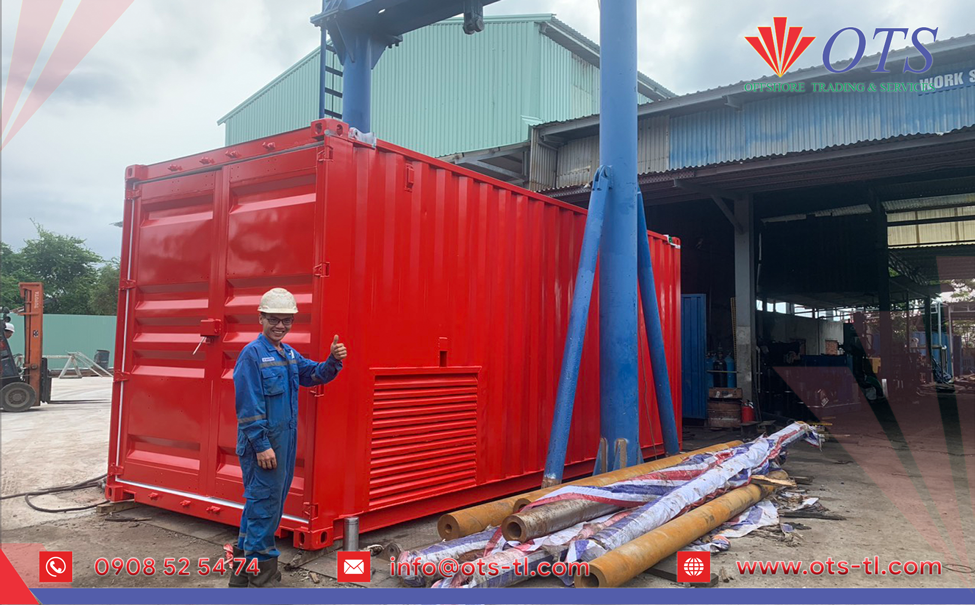What are Mud Tanks?
Mud tanks are large steel containers designed to store and circulate drilling fluids (often called “mud”) in the oil and gas industry. Drilling fluids are essential for cooling the drill bit, carrying rock cuttings to the surface, and maintaining pressure in the wellbore to prevent blowouts. This equipment is a critical part of the solids control system in both offshore and onshore drilling rigs. Learn more about drilling fluids on Wikipedia.
Role of Mud Tanks in Solids Control
Mud tanks play an essential role in solids control by helping manage the drilling fluid throughout the operation. Their main tasks include:
- Separating solids from drilling fluids: Drilling mud can pick up rock cuttings and debris during drilling. Mud tanks store this fluid, while solids control equipment like shale shakers, desanders, and desilters separate out the solid particles. Read more about solids control on Wikipedia.
- Conditioning drilling fluid: Mud tanks allow operators to add chemicals and other additives to adjust the fluid’s properties, such as viscosity and density, to suit different phases of drilling.
- Cooling and lubricating: The stored fluid circulates through the drill string, cooling and lubricating the drill bit, reducing friction, and extending the life of the equipment.
Location of Mud Tanks on Drilling Rigs
On offshore drilling rigs, space is often a premium. Therefore, mud tanks are compact but strategically placed near the rig floor, close to other solids control equipment, such as shale shakers, centrifuges, and mud pumps. For onshore rigs, tanks are placed on the foundation and arranged to allow for easy circulation of fluids. The exact location can vary, but their proximity to critical drilling equipment ensures optimal fluid handling.
Applications of Mud Tanks
Mud tanks are widely used across various drilling environments:
- Offshore drilling rigs: These rigs, which operate in harsh oceanic environments, require mud tanks to manage large volumes of fluid within compact spaces. Offshore drilling details from Wikipedia.
- Onshore drilling rigs: Mud tanks for onshore drilling can be larger due to fewer space restrictions, with additional tanks used to manage reserve fluids.
- Geotechnical drilling rigs: In geotechnical drilling, the tanks are designed to handle specialized fluids required for sampling and testing underground conditions.

How Many Mud Tanks are Required?
The number of mud tanks on a rig depends on various factors such as:
- Size of the drilling operation: Larger rigs with deeper wells may require additional tanks.
- Fluid volume requirements: The depth of the well and the type of drilling operation often dictate how much fluid needs to be circulated and stored.
Typically, offshore or onshore rigs may have 3 to 6 mud tanks. Each tank serves different purposes, such as active circulation, reserve storage, or mixing.
Manufacturing Standards and Certifications for Mud Tanks

Manufacturers producing mud tanks must meet strict standards to ensure safety and operational efficiency in demanding environments. Important certifications include:
- API Standards: The American Petroleum Institute (API) ensures that mud tanks meet the specific requirements of the oil and gas industry. Learn more about API standards.
- ISO 9001 Certification: This certification ensures the quality management of the manufacturing process.
- ASME Standards: The American Society of Mechanical Engineers (ASME) certifies pressure vessels, which are vital for mud tank integrity under pressure. ASME Certification.
- Corrosion Resistance: High-grade steel and protective coatings are used to prevent corrosion, ensuring the tanks can handle harsh chemicals and corrosive environments.
Conclusion
Mud tanks are vital components in drilling operations, ensuring proper solids control, effective fluid circulation, and safety on drilling rigs. Their role in solids separation and fluid conditioning not only boosts drilling efficiency but also enhances safety standards. For successful oil and gas drilling operations, it is crucial that mud tanks are manufactured to the highest standards and placed strategically on rigs. With appropriate certifications, they help maintain operational efficiency, safety, and environmental compliance.
For more insights on the drilling process and related equipment, check out this article on Drilling Rig Operations.









